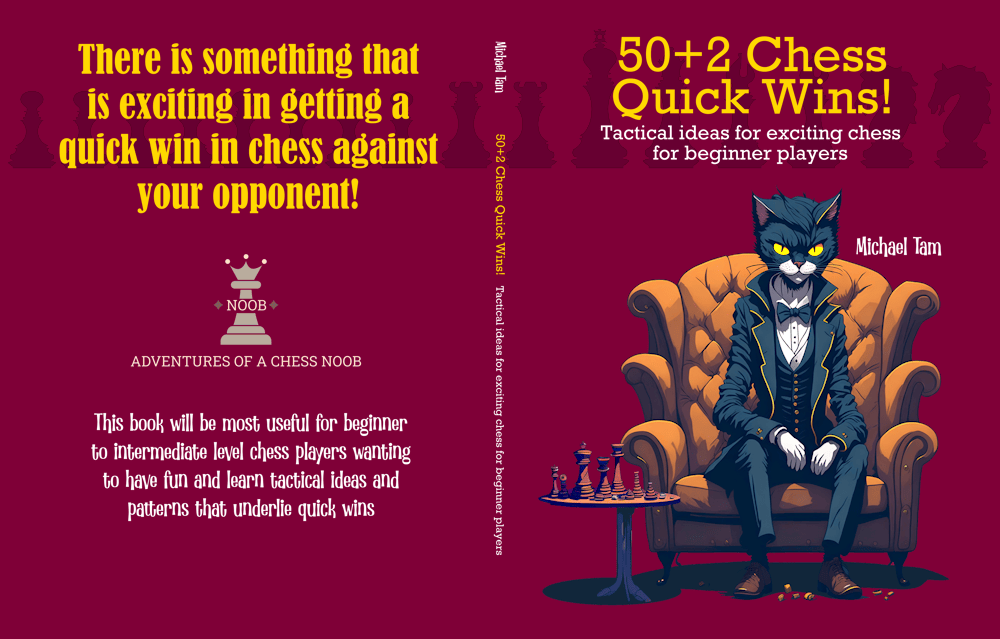
Noob vs Noob UNPLUGGED #13 | PUNISHING Pirc Defense x 2! 🎵♟️😊
#noobvsnoob #unplugged #jazz #casual #pirc #modern

![]()
CHESS UNPLUGGED | Sometimes, I just like to unwind by not thinking too hard, play a couple of quick casual unrated games, while listening to some slow jazz! 😌♟️🎵
Since my last Noob vs Noob UNPLUGGED video, the channel has continued to grow strongly, currently at more than 26,000 subscribers!
This morning, I woke a bit early so decided to play some unplugged chess with some coffee. Surprisingly, I played two consecutive games against the Pirc Defense, something that I don’t usually face very often.
![]()
* * *
![]()
In the first game, my opponent played the Pirc/Modern with (e6 and g6), and against this, I’m a fan of the “three pawns attack”/Austrian tactic (d4-e4-f4)!

![]()
Conceptually, we punish Black’s tentative approach by boldly taking space in the centre and will aim to develop our king’s knight behind the f-pawn. As someone who plays the Vienna Gambit, I love my f4/f5-pawn openings, and I’d previously described and evaluated all 99 named f4/f5 openings. I knew that this was an effective way to play with White!
Unfortunately for Black, they didn’t know how to play the Pirc/Modern with a curious (3… Qd7?!), flagging that they were probably a beginner. This game is also a salutary lesson on why you should avoid developing your queen early, unless it is part of well-established theory. On turn 7, I decided to play a tricky aggressive knight attack (7. Ng5!?), which Black did not correctly foil. Placing pressure on the opponent’s f2/f7 square can often be a winning tactic. The cramped space resulted in no freedom of movement for Black’s pieces, and on turn 12, I was very pleased to have found a way to trap Black’s queen, and more than that, I’d been seeking it for the past couple of turns!

![]()
The rest of the game was just mopping up pieces. I carelessly hung a knight on turn 19, but this made no difference as I was still up 14 points of material. My opponent bravely played on for another ten turns but then abandoned the game (don’t be that guy!).
![]()
* * *
![]()
In the second game, Black was also likely a beginner, and they played the Pirc Defense: Maróczy Defense, which I wasn’t familiar with.

![]()
This particular opening, trading pawns opening the d-file, and then trading queens is named after a game that ended in a draw between two early masters of Hypermodernism, Geza Maróczy with Black, and Richard Réti with White: Réti—Maróczy, 1923, Carlsbad, Czech Republic.
Fascinatingly, although Black loses the right to castle, tactically a seemingly consequential concession, Stockfish considers the position still mostly equal with an evaluation of only [+0.3]. In practice, it is probably much easier to play with the white pieces and indeed in the Lichess community database, White wins 53% to Black 40% from the position. In the game, I just played some immediate threats (5. Nf3), and Black blundered immediately with (5… Bg4??). With the queens off the board, the “Ruy López” bishop isn’t pinning the knight, which leaps forward to capture Black’s e-pawn (6. Nxe5), threatening to chain an attack on Black’s f7-pawn which comes with an absolute fork of Black’s king and h8-rook!
The rest of the game involved some simple tactical play, with the goal to trade down by offering, or forcing balanced piece trades. Like the first game, Black was a good sport and played on in a losing position, but eventually resigned on turn 23, defeated. Good game, GG!
![]()
* * *
![]()
Learn how to play the best chess opening attacks in the Romantic style with my new book, “Become a Chess Assassin!” available now on your local Amazon store!




